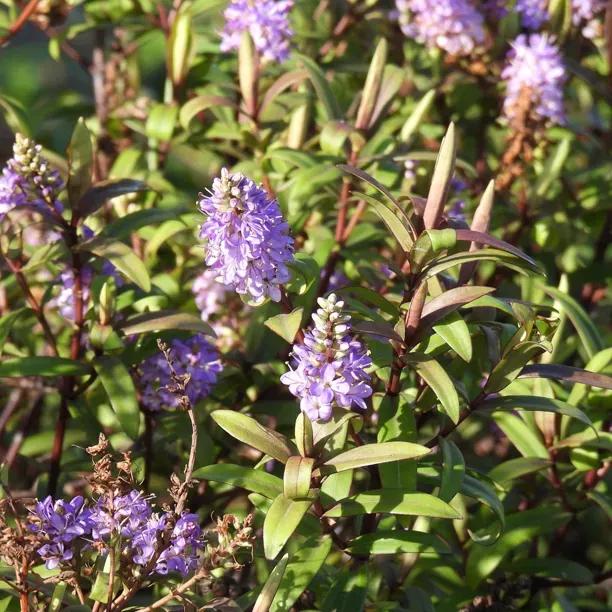Red Edge Hebe Plants
The details
- Evergreen. Grey-green leaves, red tinged in spring.
- Low maintenance ornamental
- Compact spires of lilac blue flowers Jun-Jul.
- Grows well in pots
- RHS Plants for Pollinators
- RHS Award of Garden Merit
- Max. Height: 50cm
- Pot Grown: Year Round Delivery
Recommended extras
Description
Hebe Red Edge Plants. 2 Litre Pots
Red Edge has pleasingly orderly evergreen foliage that starts off with a red tinge in spring, which fades to the rims of the blue-grey mature leaves. The lilac-blue flower spikes are plump and compact, great for bees. It is a popular edging plant. It is bushy, upright and compact to about 50cm high by 60cm wide.
Hebes are only delivered pot-grown, year round.
Browse our other hebe varieties, or our full range of ornamental shrubs.
Features:
- Evergreen. Grey-green leaves, red tinged in spring.
- Low maintenance ornamental
- Compact spires of lilac blue flowers Jun-Jul.
- Grows well in pots, window boxes
- Good for coastal areas.
- RHS Plants for Pollinators
- RHS Award of Garden Merit
- Max. Height: 50cm
- Pot Grown: Year Round Delivery
Growing Red Edge Hebes
Suitable for any well-drained soil, they tolerate partial shade well. They are hardy across most of the UK, but in cold areas of the North and Scotland, they are best grown in pots that can be moved into shelter from dry winter winds. In other areas outside the South West, covering them during an extended period of frost or snow is recommended to prevent cosmetic damage, but not essential.
Hebes prefer poor soil, so do not add any of our rich composts to the soil before planting: sand would be better in most normal topsoils. In heavy clay soil, churn the ground over to add a bit of gravel & grit (not sand) to give their roots breathing space, likewise add grit to a planting mix for Hebes in pots.
They don't like being hard pruned, so give them a light trim in spring to keep them tight and bushy. If you need to tidy a stray stem, prune it back as little as possible, to a good-looking bud.
In Your Garden Design
It's particularly good in winter. When young, it is very versatile and can be used to great effect in a rock garden, as a low growing hedge or as an edging plant in a mixed border. Hebes, because of their hardy nature, work well with most plants. Try pairing with the blue hue of nepeta. It is also good with Viburnum tinus 'Eve Price' and French White, Euonymous Kathy and Escallonia Iveyi
Did You Know?
The Hebe Society believes this to be a cross between Hebe albicans and Hebe pimeleoides.


